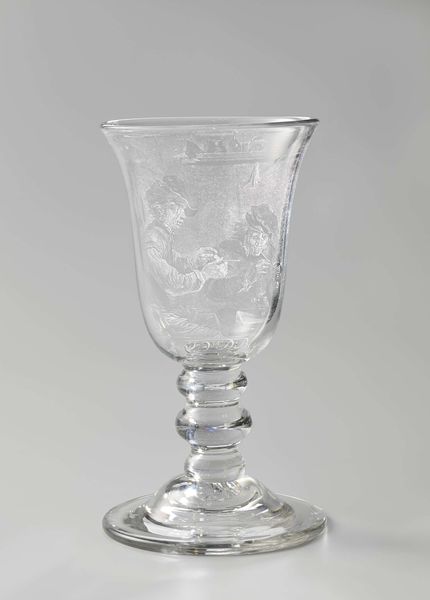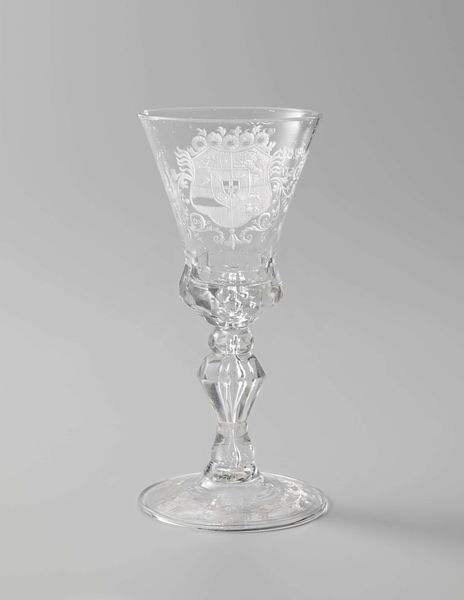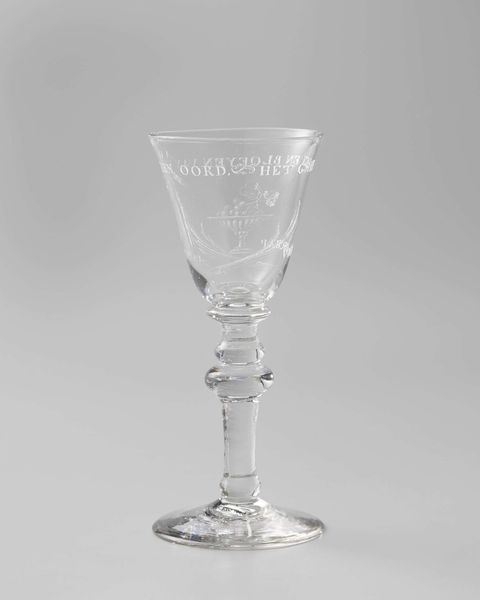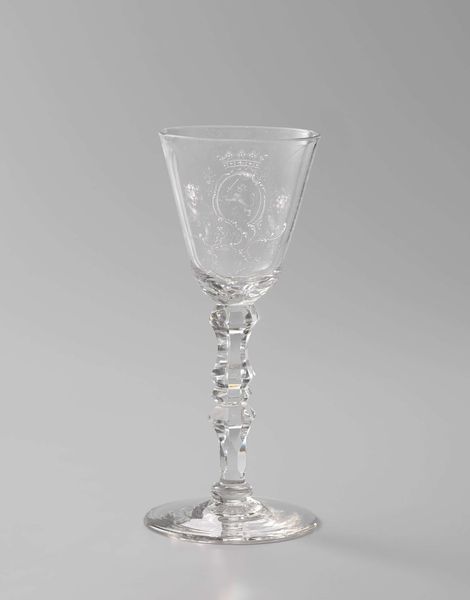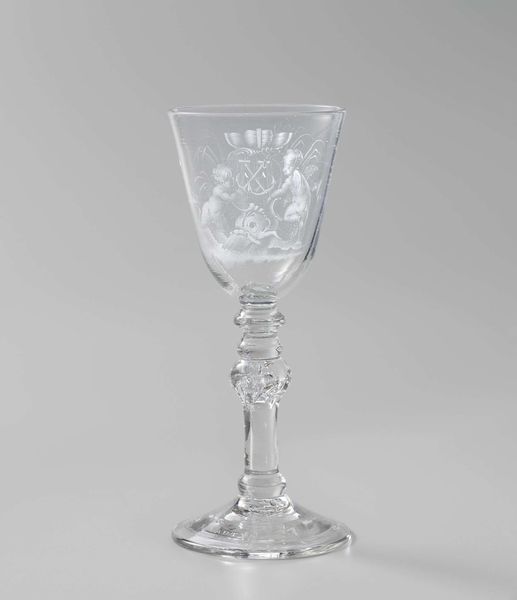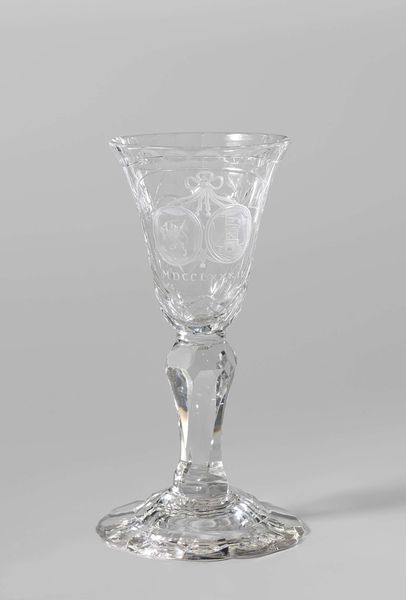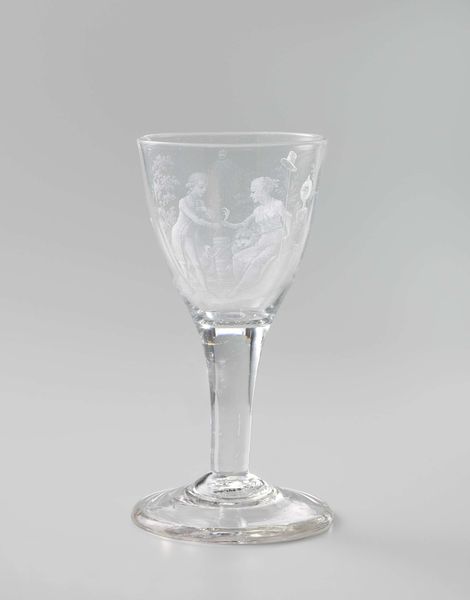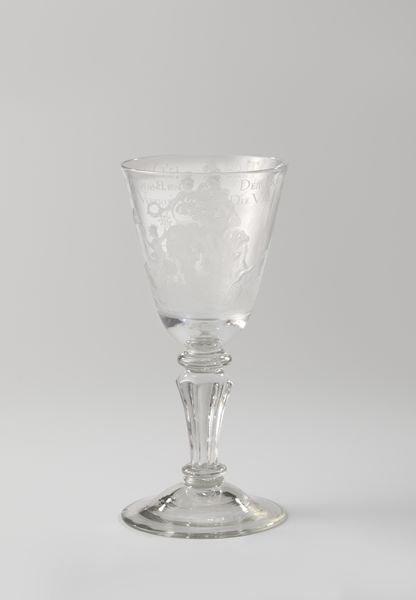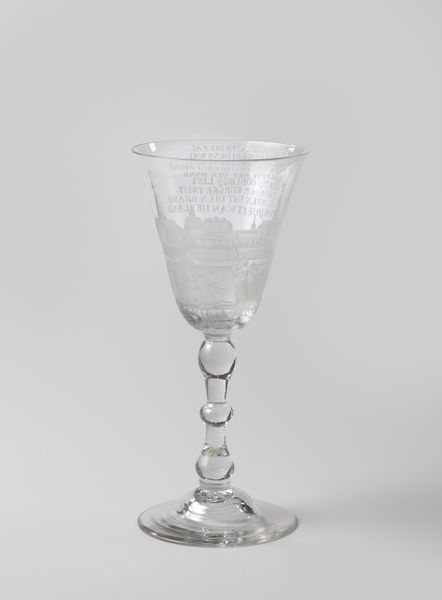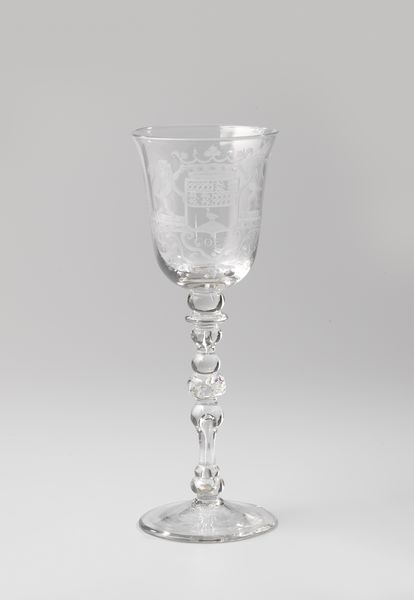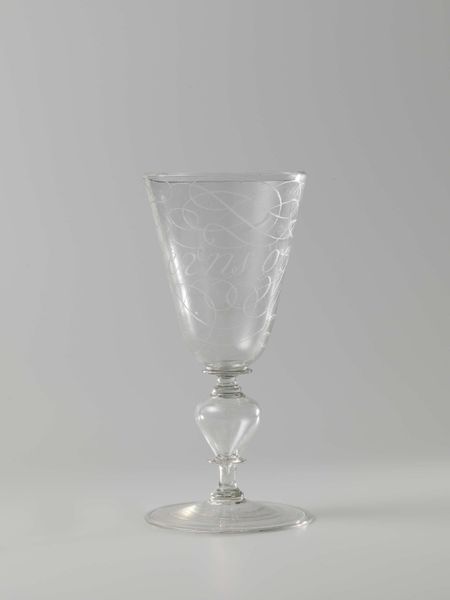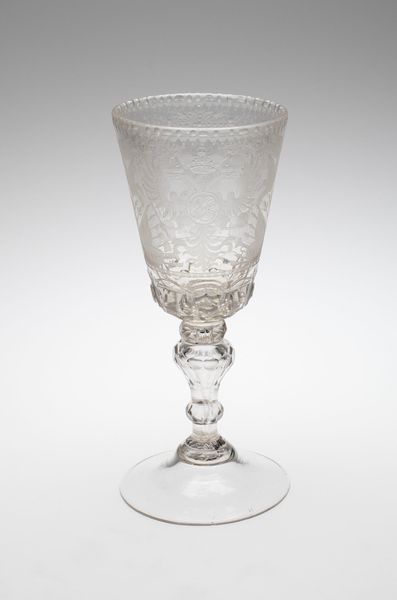
glass
#
baroque
#
dutch-golden-age
#
glass
Dimensions: height 12.7 cm, diameter 9 cm
Copyright: Rijks Museum: Open Domain
Curator: Here we have a stunning, though deceptively simple, glass goblet. Created around 1681 by an anonymous artist, it is currently housed in the Rijksmuseum. The inscription etched upon the glass reads "Doet uw best". Editor: It strikes me immediately as celebratory, yet almost precariously balanced. That bulbous stem and wide, flat base seem at odds with the delicate etching. There's a visual tension there that is rather captivating. Curator: Absolutely. The artist's attention to the properties of glass is undeniable; see how they exploit the medium's inherent transparency? The form itself, and the elaborate Baroque-style inscription, are the primary focus. Editor: While the formal elements are important, it's the goblet's function within Dutch Golden Age society that I find truly compelling. Drinking, feasting, these were potent signifiers of communal identity, of social standing. Was this goblet made to celebrate a specific event, or was it a commission intended for purely decorative purposes? Curator: Determining original context without a known artist is challenging. Still, focusing on the work, we see masterful manipulation. The clear glass allows for light to pass through, creating reflections that further enhance the elaborate calligraphy. The choice of script contributes to its ornamental impact. Editor: True. But an exhortation to "Do Your Best" has an undeniably Protestant work ethic undertone. These seemingly celebratory vessels served as constant reminders of civic duty and personal accountability. So the question for me is: who was being told to do their best, and in what context? I wonder if the owner struggled with being responsible? Was it a constant reminder? Curator: You present an insightful analysis. It forces us to reflect that in viewing historical artworks such as this goblet, we are presented with multi-faceted cultural expressions that transcend purely aesthetic value. Editor: Exactly. It serves as a reminder that even everyday objects from the past have stories to tell about societal values and struggles. Curator: I concur, bringing attention to broader themes that intertwine art history, cultural norms, and individual interpretation enhances understanding of the glass work on display.
Comments
No comments
Be the first to comment and join the conversation on the ultimate creative platform.
